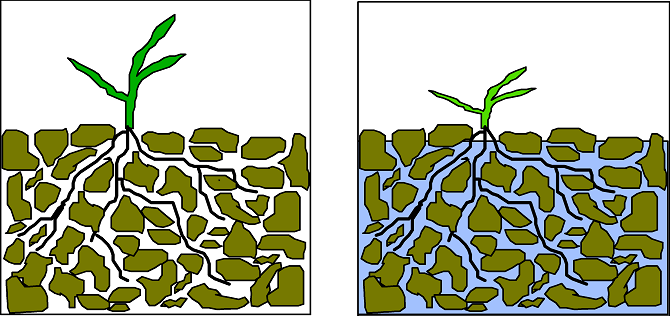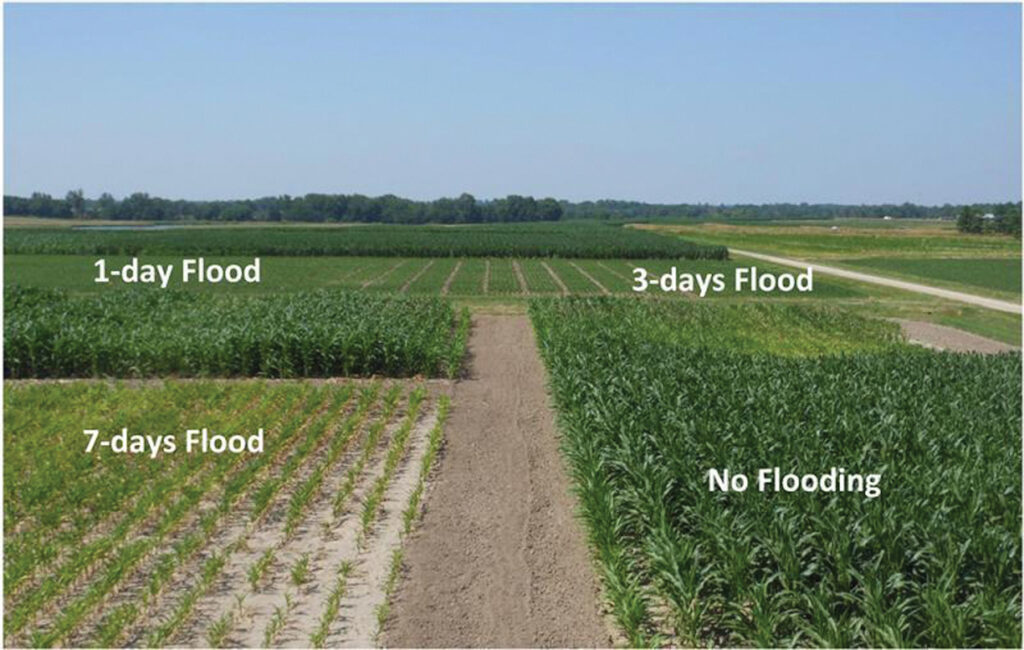Waterlogging its 5 Types & Causes
Waterlogging is a form of natural flood when the underground water rises to surface level, resulting in over-irrigation.
It can affect the natural process in soil, displace the spoil and result in the build-up of toxic substances in the earth, and it can impede plant growth in the immediate areas.

Types of waterlogging
- Riverine flood
- Ocean Flood
- Seasonal
- Perennial
- Sub-soil
1. Riverine flood waterlogging
Riverine flood is the type that occurs during the rainy season, and floods come near land from the rivers because it carries the excess water.
The waterlogging in the lands leads to death and breaks the number of crops and plants.
2. Oceanic flood waterlogging
As the name suggests, oceanic flood water logging is characterized by marine water spreading onto the lands, crops and causing waterlogging.
It happens when extreme weather affects the oceans, like tsunamis and hurricanes.

3. Seasonal waterlogging
It happens during rainy seasons, and runoff water accumulates into the depressions and lowland, leading to waterlogging.
4. Perennial waterlogging
It happens when deep water or swaps get rainwater, and the runoff and seepage water spreads onto neighbor’s land, causing perennial.
5. Sub-soil waterlogging
It is another type that occurs when the water tables rise high, especially during rain and causing the waterlogging.
Main Cause of waterlogging
1. Physiography
The topography, shape, slope, and drainage pattern of a place should cause waterlogging; the physiography determines the speed of surface runoff and the time it takes for the soil to drain the surface of the water.
Instance for low lying areas like depressions valleys and flat lowland experience more naturally since the surface of flows concentrate on lowland. So it results, natural swamps.
2. Soil type
High clay soils like soils prone and black cotton soils to surface sealing, hold moisture for long periods, it means they become waterlogged quickly.
3. geo logy
The impervious stratum below the topsoil obstructs rainfall infiltration, causing the perched water table or false water table. The shallow area’s soils, the hardpan close to the surface, and those with water tables are also likely to become waterlogged, especially when they are subjected to heavy rainfall.
4. Excessive irrigation and flawed drainage system by farmers.
It is a man-made cause if the irrigation is not planned well, drainage issues should further worsen the problem. Irrigation adds additional water to the soil profile, above and over the naturally occurring rainfall.
Main Effects of waterlogging
1. Poor soil aeration
It causes the air within the soil to move out into the atmosphere, replacing it with extra water.
Poor aeration facilitates the growth of toxins and more harmful substances.
Such saturated soil also decreases microbiology activities which are vital for the formation of food plants.
2. Change in soil temperatures
Waterlogging lowers the temperature of the soil.
The low temperature of moist soil affects the microorganism and activities of microorganisms, subsequently lowering the rate of nitrogen-fixation
3. Loss of cash crops
Most crops can not be cultivated in water logging soils and survive.
It, therefore, makes farmers starve and lose out on the cash they would otherwise get from selling their crops.
It forces them to switch to rice and assume it can grow in such areas.
4. Effects on human health
It affects the environment because it harbors disease vectors such as slugs, snails, and mosquitoes and, in turn, brings illnesses such as bilharzia, malaria, typhoid, and others; it affects the human population, plants, and animals. And it is affecting the environment.
Various ways to preventing waterlogging
1. Control the loss of water
Several measures can decrease seepage loss from the canals. The first is by lowering the total supply of level of the channels to a sufficient extent.
Then, lining the section of the canal by providing a lining with the seepage loss makes the canal section good watertight. After this, by introducing the intercepting drains, which are constructed parallel to the canal.
2. Disposing of the rainwater
The rainwater quickly removes from the soil’s surface, thereby preventing the rise in the water table level and subsequent waterlogging.
3. Preventing the loss of water
Loss of percolation can be eliminated by using more water economically. And can achieve it by keeping the intensity of low irrigation.
Only a tiny portion of irrigable land becomes flooded, and only loss in percolation happens in the limited areas. It’s also keeping the water table sufficiently low.
4. Raise the beds
If we’re working on a small garden and becoming waterlogged, we might consider raising it and growing our plants or crops on raised beds.
5. Not using alkaline water
Alkaline water used in irrigation affects the soil and makes it more susceptible to waterlogging in the future. For this reason, alkaline water could not be used for purposes of irrigation.
.
We Love Cricket